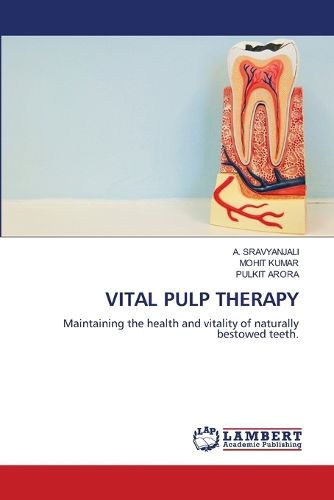Readings Newsletter
Become a Readings Member to make your shopping experience even easier.
Sign in or sign up for free!
You’re not far away from qualifying for FREE standard shipping within Australia
You’ve qualified for FREE standard shipping within Australia
The cart is loading…






Recent advancements in Vital Pulp Therapy have demonstrated clinical results comparable to traditional treatments like root canal therapy for pulp inflammation. As a result, there have been changes in educational programs, a consensus on preserving pulp, and a shift towards more frequent use of Vital Pulp Therapy in dental settings. Despite these improvements, there is still a lack of advanced diagnostic tools, specific biomaterials, and substantial evidence comparing different treatment options like revitalization and full pulpotomy for teeth with irreversible pulpitis symptoms. Furthermore, there is no agreement on the best approach to managing common dental issues such as deep cavities or exposed pulp, which is not ideal for patient care. The future of Vital Pulp Therapy should concentrate on developing innovative biological strategies for wound healing, including pulp tissue management, with the goal of enhancing pulp regeneration processes for better outcomes. Therefore this book aims to provide a deeper understanding of regenerative responses in the dentine-pulp complex is necessary to establish effective therapeutic targets and a better prognosis.
$9.00 standard shipping within Australia
FREE standard shipping within Australia for orders over $100.00
Express & International shipping calculated at checkout
Recent advancements in Vital Pulp Therapy have demonstrated clinical results comparable to traditional treatments like root canal therapy for pulp inflammation. As a result, there have been changes in educational programs, a consensus on preserving pulp, and a shift towards more frequent use of Vital Pulp Therapy in dental settings. Despite these improvements, there is still a lack of advanced diagnostic tools, specific biomaterials, and substantial evidence comparing different treatment options like revitalization and full pulpotomy for teeth with irreversible pulpitis symptoms. Furthermore, there is no agreement on the best approach to managing common dental issues such as deep cavities or exposed pulp, which is not ideal for patient care. The future of Vital Pulp Therapy should concentrate on developing innovative biological strategies for wound healing, including pulp tissue management, with the goal of enhancing pulp regeneration processes for better outcomes. Therefore this book aims to provide a deeper understanding of regenerative responses in the dentine-pulp complex is necessary to establish effective therapeutic targets and a better prognosis.